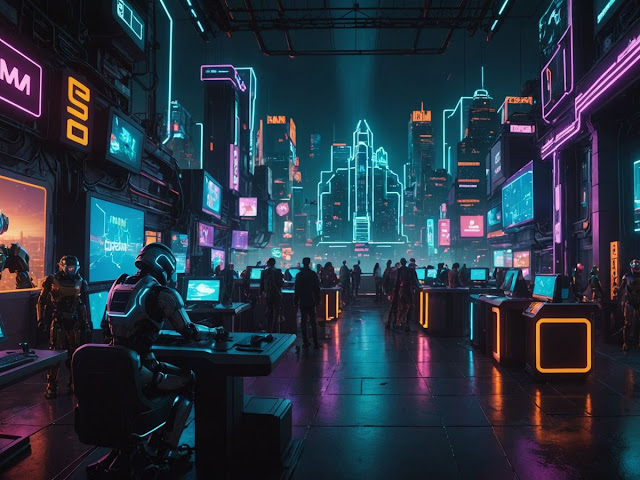Google Research has unveiled GameNGen, a groundbreaking AI model capable of simulating the classic 1993 game Doom without using any of its original code or graphics.
This innovation marks a significant leap in AI capabilities, hinting at a future where games could be generated entirely by neural networks.
Key Takeaways
- GameNGen can simulate Doom in real-time at 20 FPS.
- The AI model uses a neural network to recreate the game without traditional code or visual assets.
- This technology could revolutionise game development, making it more accessible and cost-effective.
The Technology Behind GameNGen
GameNGen is a generative diffusion model developed by Google Research in collaboration with Tel Aviv University. The model operates by predicting the next frame of gameplay based on previous actions and game states, much like how our brains process information.
How It Works
- Reinforcement Learning: Initially, an AI agent was trained to play Doom using reinforcement learning, where it was rewarded for not dying.
- Diffusion Model Training: The gameplay data was then used to train a diffusion model, which learned to recreate the game from scratch.
The result is a playable version of Doom that runs at about 20 frames per second. While not perfect, it is a significant achievement in AI-driven game simulation.
Implications for Game Development
The ability to simulate a game like Doom without traditional coding opens up numerous possibilities for the future of game development.
Democratising Game Development
- Accessibility: Indie developers and small studios could create games without needing extensive programming skills.
- Cost-Effectiveness: Reducing the need for large teams of programmers and artists could lower production costs.
Dynamic and Evolving Games
- Adaptive Gameplay: Games could evolve in real-time based on player behaviour, offering a more personalised experience.
- Real-Time Simulation: This technology could be used to create more responsive and dynamic virtual environments, particularly in VR.
Limitations and Future Prospects
Despite its impressive capabilities, GameNGen is not without its limitations.
Current Limitations
- Performance: The model runs at 20 FPS, which is not optimal for modern gaming standards.
- Memory: GameNGen can only remember about three seconds of gameplay, affecting long-term consistency.
- Specificity: Currently, the model is primarily trained on Doom and may not easily adapt to other games.
Future Developments
- Broader Applications: With further training and development, GameNGen could potentially simulate more complex games and environments.
- Industry Impact: This technology could revolutionise not just gaming but also fields like autonomous vehicles and smart cities by providing real-time simulation capabilities.
Conclusion
GameNGen represents a significant leap forward in AI-driven game development. While it is currently a proof-of-concept, the potential applications of this technology are vast and could fundamentally change how we create and interact with digital environments. As AI continues to evolve, the line between reality and simulation may become increasingly blurred, opening up exciting new possibilities for the future.
Sources
- Generative AI creates playable version of Doom game with no code | New Scientist, New Scientist.
- AI Is Hallucinating DOOM, How-To Geek.
- Google’s GameNGen: The AI That’s Playing Doom with Our Minds | by Cogni Down Under | Aug, 2024 | Medium, Medium.
- GameNGen: Google researchers simulate "Doom" without an engine, heise online.
- This AI Model Can Simulate the PC Game Doom in Real-Time, MSN.


